NRAO eNews
Volume 5, Issue 9
September 24, 2012
NRAO eNews
Volume 5, Issue 9 • September 24, 2012
NRAO Response to the NSF/AST Portfolio Review Committee Report
The recently published NSF-AST Portfolio Review Committee Report – Advancing Astronomy in the Coming Decade: Opportunities and Challenges — includes recommendations that NSF divest from the NRAO Green Bank Telescope and Very Long Baseline Array, and eliminate the University Radio Observatory program, by 2017. The NRAO response to the Committee's report is available on-line. AUI has created an online forum for the astronomy community and general public to understand and discuss the Portfolio Review Committee recommendations regarding US radio astronomy.
AST Portfolio ReviewNRAO ResponseAUI Community forumUpcoming Events
![]() Molecular Spectroscopy in the Era of Far-IR Astronomy
Molecular Spectroscopy in the Era of Far-IR Astronomy
Oct 28-31, 2012 | Atlanta, GA
![]() The First Year of ALMA Science
The First Year of ALMA Science
Dec 12-15, 2012 | Puerto Varas, Chile
![]() ALMA Special Session
ALMA Special Session
Jan 8, 2013 | Long Beach, CA
![]() NRAO Town Hall
NRAO Town Hall
Jan 8, 2013 | Long Beach, CA
![]() Transformational Science with ALMA: From Dust to Rocks to Planets
Transformational Science with ALMA: From Dust to Rocks to Planets
Apr 8-12, 2013 | Kona, Hawaii
ALMA Construction Status
Al Wootten
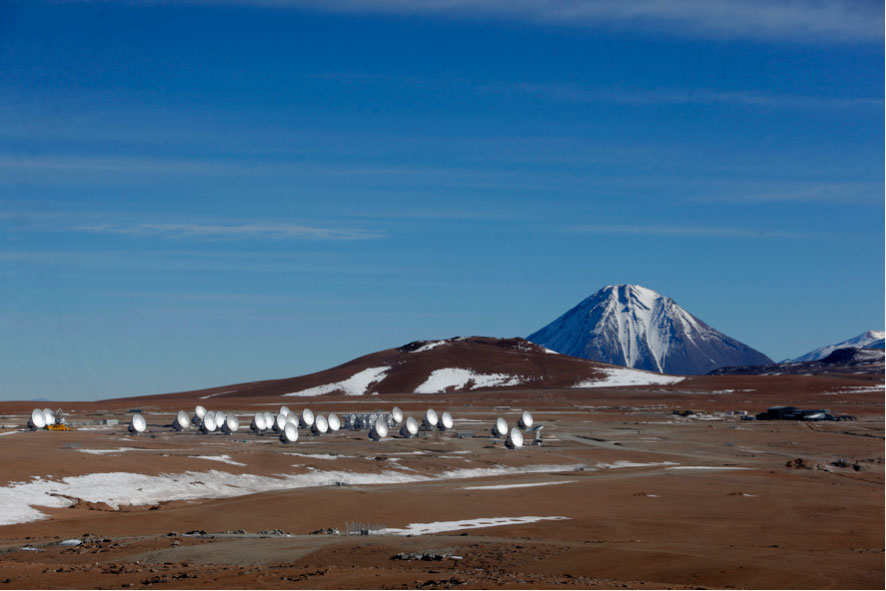
Photo courtesy C. Padilla, ALMA/NRAO/ESO/NAOJ
 Zoom
Zoom
With the 23 August acceptance of 7m diameter antenna No 11, the National Astronomical Observatory of Japan (NAOJ) has completed delivery of all of its contingent of sixteen antennas, four 12m antennas and twelve 7m antennas. Congratulations to our colleagues in Japan!
Stuartt Corder has recently taken up his post as Commissioning and Science Verification (CSV) Project Scientist. He will fulfill the Project Scientist role held by Richard Hills on essentially all matters related to ALMA construction. CSV obtained a great deal of good data in the polarization campaign. ALMA hopes to have 6 of the 7m antennas equipped with bands 4 and 8 by the end of October so that CSV can start science demonstration observations in those bands.
As of early September, there are 40 antennas at the high-elevation ALMA Array Operations Site (AOS). Twenty-nine of these antennas are available for the 12m array and 11 antennas are available for the Atacama Compact Array (ACA). There are elements of 62 of the final 66 antennas at the ALMA site. Fifty-one antennas have been accepted from the contractors by ALMA and, of these, 44 have been outfitted with ALMA electronics at the Operations Support Facility (OSF). Two North American antennas (22 and 23) continue their hardware integration at the OSF, as do three European antennas and one Japanese antenna. Two other antennas previously at the AOS are undergoing upgrades or repairs at the OSF. The final two North American antennas to be delivered are scheduled for acceptance tests over the next several weeks.
With 40 antennas, the 32 input limits of the dual quadrant correlator have been surpassed. The correlator will be shut down on 3 September for reconfiguration to its final four quadrant configuration. Commissioning will continue using the ACA and its correlator. After a period of testing, Cycle 0 Early Science will resume on the main array using the completed correlator in early October. The new software package that supports the final correlator configuration is already under test.
Stations out to a 5km radius are delivered but acceptance awaits connection to the Permanent Power Supply (PPS) at the AOS. The permanent power system is necessary to use any pads outside the present configuration. Commissioning of larger, Cycle 1 Early Science configurations awaits implementation of the PPS, which is expected in October.
On the receiver front, the final Band 6 cartridge was shipped to the European Front End Integration Center (FEIC) on 16 Aug 2012. Congratulations to the Band 6 team, who still are engaged in follow-up work. Fifty-nine assembled Front Ends have been delivered to ALMA in Chile. The last two from North America are in the final stages of testing in Charlottesville at the NRAO Technology Center (NTC).
The ALMA Pipeline software is being updated at the Santiago Central Office (SCO) before being deployed to the regional centers. This version has improved archive access and image production.
Early Science Cycle 0 Block 22 (of 29) has been progressing quite well and has benefited from excellent weather, with no time lost. Most nights have had spectacular weather and up to 28 antennas have been used. Overall, ninety-six projects have been started. PIs of 46 projects have received data and 17 projects are completed. About 70% of executions needed for the highest priority Cycle 0 Early Science projects have been completed. It is expected that nearly all will be completed by the end of the year, though not all ALMA Band 9 executions can be completed and there will be some right ascensions where all projects cannot be completed.
By one count, 11 ALMA science papers have been published so far in the nearly eleven months since Early Science commenced. Within the last month, several new results have been published based upon the publicly available Science Verification data, located at the ALMA science portal. These include the identification of glycolaldehyde, a simple form of sugar, toward the accreting protostar IRAS16293-2422B (Joergensen et al). The line density observed in the 686-705 GHz data exceeded that measured previously by submillimeter instruments by an order of magnitude. The spatial resolution of the data was 0.3"x0.2".
Note that on Saturday night, 1 September Chile advanced to summer time.
This Month @ the NAASC
ALMA 2012 User Survey
ALMA will soon complete one year of early science operations. We are now looking forward to hearing your opinion regarding several aspects of ALMA user support. With this purpose in mind, we kindly ask you to complete the survey at:
https://almascience.nrao.edu/arcsurvey
This survey is anonymous and is intended to highlight aspects of the user support that worked particularly well during Early Science to date, and those that could be improved for the upcoming cycles. The results of this survey represent important feedback to NRAO and the North American ALMA Science Center, for which we thank you in advance.
The deadline to submit this survey is Monday, 1 October at 15:00 UT. Depending on your role, e.g. whether or not you were a PI in Cycle 0 and/or Cycle 1, and whether you have been reducing ALMA data, it will take between 2 and 6 minutes to complete.
If you have any questions please contact us through the ALMA Helpdesk.
ALMA Cycle 1 Proposals
Cycle 1 Early Science proposals for ALMA have been distributed to the 77 referees for evaluation and ranking. There will be 800 hours of time available on the 12m array during Cycle 1, which begins 1 January 2013. There were 1132 proposals submitted for time, from 2836 unique proposers worldwide (out of 3984 registered users). Of these proposals, 339 were submitted under the North American Executive, including 299 from US institutions. For the North American proposals, there were 1169 unique proposers, 810 from US institutions, and 114 unique US institutions were represented. The proportions of US and European proposals (26/43) are nearly identical to the proportions of US and ESO state astronomers (2331/3870) with membership in the IAU.
The eleven science panels of seven members are divided into five science areas. Each panel will receive between 90 and 117 proposals. As with Cycle 0 Early Science, prior to meeting each panel will go through a triage stage to reduce the number of proposals discussed during the Santiago meeting to ~ 80. The referees will convene in Santiago the week of 1 October to discuss these proposals. At the end of the week, the panel results will be combined into a ranked list by the ALMA Proposal Review Committee, chaired this year by Francoise Combes. The higher ranked proposals will undergo technical evaluation in mid-October. A final list, with notification of status distributed to the PIs, is expected by 15 November.
2013 Rocks! Abstract Submission - NOW OPEN!
The North American ALMA Science Center (NAASC), in cooperation with the Academia Sinica Institute of Astronomy and Astrophysics (ASIAA) in Taiwan, is pleased to announce the 7th NAASC workshop entitled: "Transformational Science with ALMA: From Dust to Rocks to Planets – the Formation and Evolution of Planetary Systems." This NAASC – ASIAA "2013 Rocks!" workshop will be held 8-12 April 2013 on the Big Island of Hawaii.
Join your colleagues on the Big Island of Hawaii, April 8-12, 2013 to explore the evolution of material in protostellar disks from formation to dissipation. The Island of Hawaii is home to the largest observatory in the Northern Hemisphere, and is the site of extensive, collaborative, international research efforts. A focus of the workshop will be the processing of the gas and dust components, and the growth of planetesimals. We will also explore chemical changes, and radiative signatures at millimeter and submillimeter wavelengths. We will showcase results from ALMA early science projects and feature synergies with other telescopes that can help to advance this field, particularly those sited on the island of Hawaii.
This workshop will prepare us for the exciting adventures ahead in the new era and will not only focus on the new opportunities in astronomy but also foster new collaborations with geologists, chemists, engineers and biologists to investigate the origins of cosmic material in the universe.
The 2013 Rocks! abstract submissions page is NOW OPEN
The deadline for submitting abstracts is 15 November 2012.
Make sure you visit the meeting website for all relevant meeting information including links to the preregistration and abstract submission.
Also, remember to like us on Facebook to get the most recent updates and announcements posted by the meeting organizers and your colleagues.
2013 Rocks! is committed to broadening participation by women and under-represented minorities.
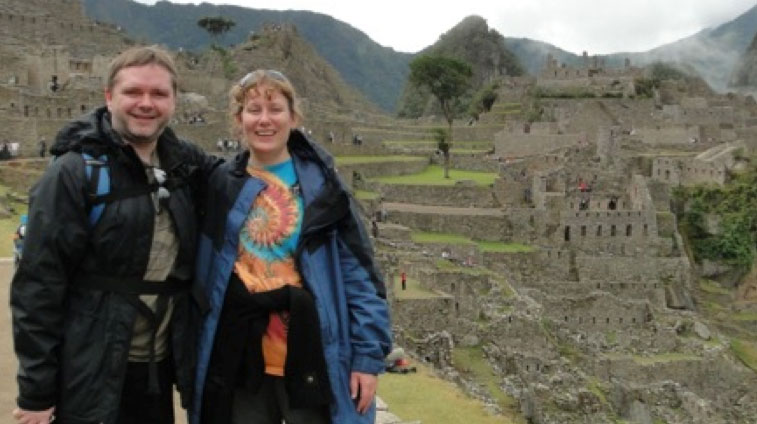
Mark Rawlings and Alison Peck
 Zoom
Zoom
Meet the NAASC: Mark Rawlings
Mark Rawlings joined the North American ALMA Science Center (NAASC) as a member of the Observatory Support Group on 21 August 2012. Mark has significant observatory operations experience, and will be principally dividing his time between observing project preparation and CASA development. Mark earned his MS at Rensselaer, working with Doug Whittet on circumstellar dust chemistry. He subsequently obtained his PhD at the University of Central Lancashire while working with Andy Adamson on ground-based optical and infrared studies of heavily reddened Galactic lines of sight. Upon completing his thesis in 1999, Mark moved to the University of Helsinki Observatory to join Kalevi Mattila's star formation and interstellar medium group, working on spectrophotometric data of photoionization regions taken using the Infrared Space Observatory (ISO) spacecraft. He then transferred to Hilo, Hawaii to work as the telescope scheduler and support astronomer for the UK Infrared Telescope (UKIRT), also participating extensively in the proposal review process.
In 2009, Mark moved to Chile to work as an ALMA Operations Astronomer. As well as performing routine ALMA staff astronomer duties, he has worked closely with most of the non-realtime software subsystem development groups. He also developed many of the operational policies and procedures for ALMA science operations. Some of his more significant contributions included the specifications for the proposal review process, development of the procedures and tools for the preparation and tracking of the Cycle 0 science projects, and helping to co-ordinate the development of the many ALMA observing modes. His current scientific interests still focus on the physics and chemistry of interstellar dust and gas, with a particular emphasis on the Diffuse Interstellar Bands (DIBs).
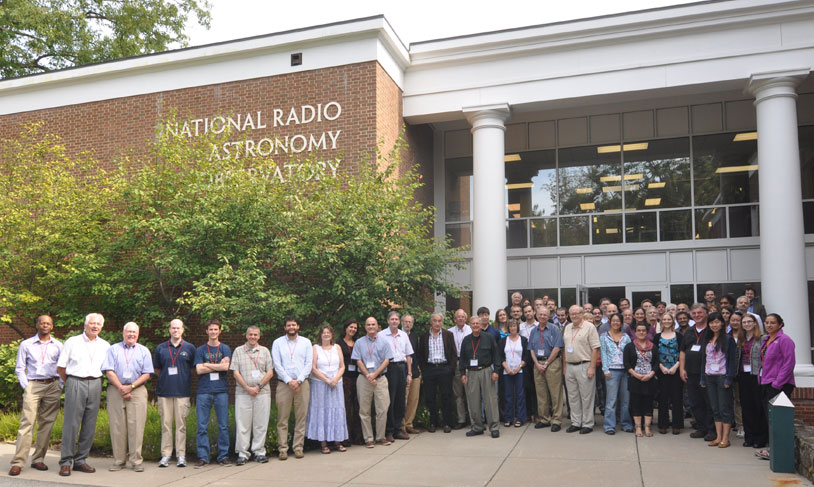
 Zoom
Zoom
The Interstellar Medium in High Redshift Galaxies Comes of Age
Al Wootten on behalf of the SOC and LOC
The North American ALMA Science Center Workshop on The Interstellar Medium in High Redshift Galaxies Comes of Age examined progress in the field since the 1991 publication by Robert Brown and Paul Vanden Bout of a CO observation in the lensed galaxy IRAS F10214+47. The workshop was held in Charlottesville, Virginia, 13-15 September at NRAO Headquarters. The 62 registered participants discussed the view into the evolution of galaxies and the Universe which these difficult observations provide. The event also focused on the scientific contributions and leadership of former NRAO Director Paul Vanden Bout.
In 1991, there was a single somewhat insecure detection of high redshift molecular gas. By the time of the Solomon and Vanden Bout Annual Reviews article in 2005, there were three dozen such observations. Today, the ensemble of detections of molecular gas in remote galaxies is approaching 200, bolstered by measurements from the Very Large Array, the Green Bank Telescope, Institut de Radioastronomie Millimetrique, Combined Array for Research in Millimeter Astronomy and very recently, the Atacama Large Millimeter/submillimeter Array.
The complete science program is on-line at
https://science.nrao.edu/facilities/alma/naasc-workshops/HizISM/index
The workshop presentations will be available on-line soon.
Mapping the Milky Way
Steven Durand
The NRAO has completed the upgrade to the Very Long Baseline Array (VLBA) C-Band receiver system (Figure-1). The upgrade includes a wideband feed and a new cryogenic receiver system that operates from 4-8 GHz. The receiver is connected to a new downconverter that has two pairs of independently tunable outputs. The system was described in more detail in the 13 Dec 2011 eNews. This system markedly enhances the ability of the 10 antennas of the VLBA to measure the Galactic structure. It increases the bandwidth of the receiver from the 4.6 – 5.1 GHz of the legacy receiver to 4 – 8 GHz, which enables the VLBA to observe the 6.7 GHz line of methanol for the first time.
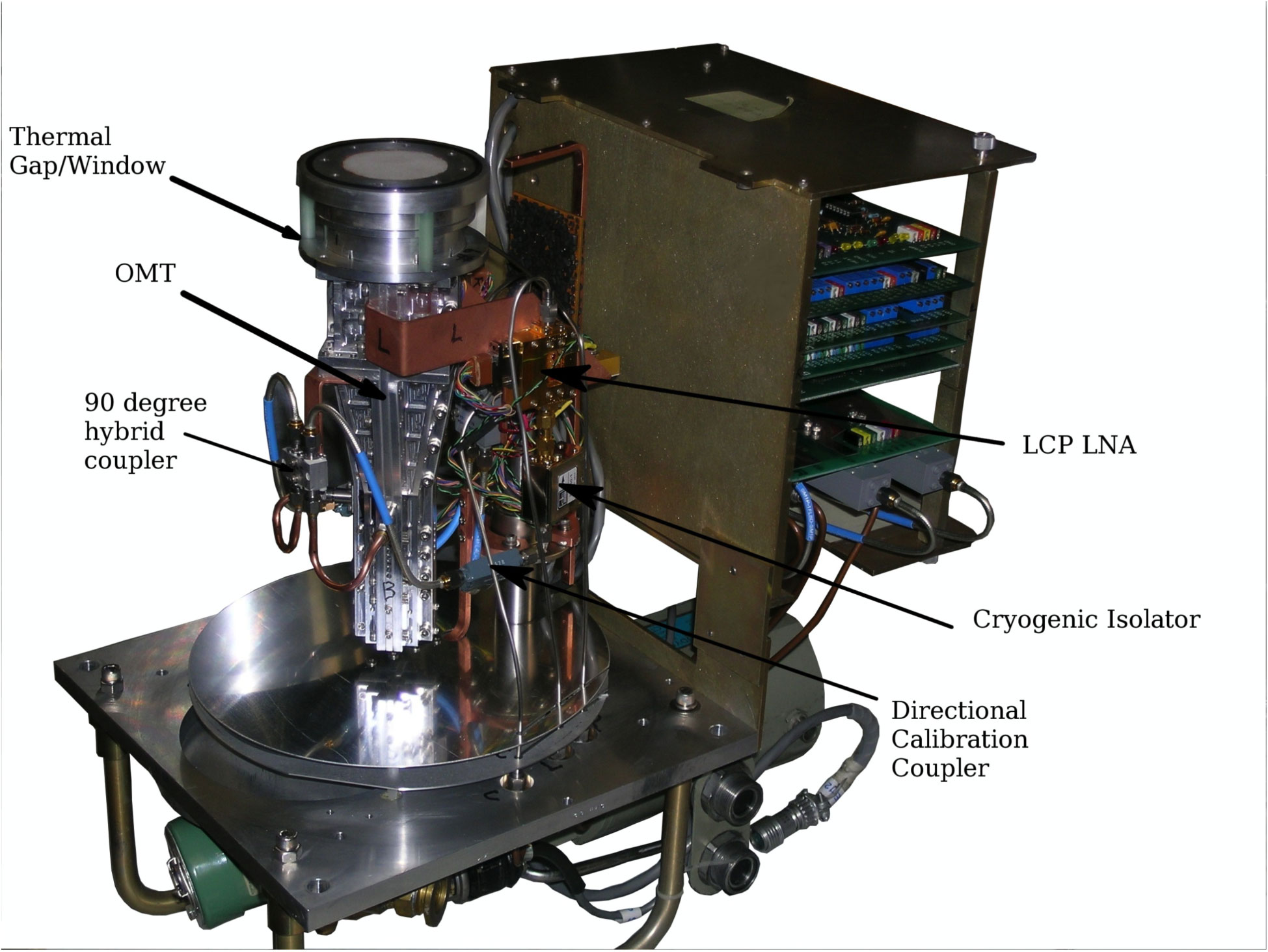
Figure 1: New VLBA C-band Receiver
 Zoom
Zoom
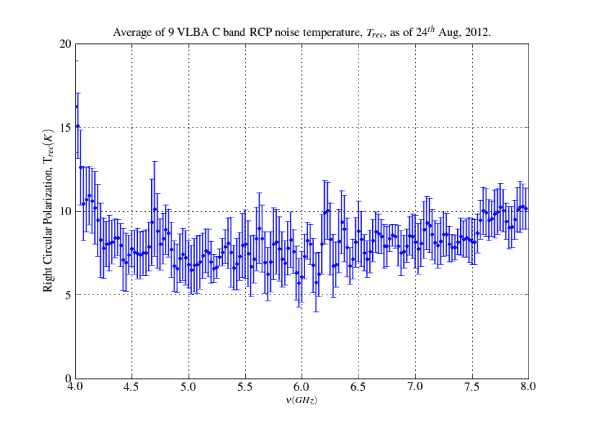
Figure 2: Low Receiver Temperature Indicates Sensitivity
 Zoom
Zoom
The spectral line of interest originates in Class II methanol masers that are located in dense envelopes of ultra-compact HII regions. Methanol masers are good tracers of the Galactic spiral arms. Maser emission in the 6.7 GHz line is typically 1 to 2 orders of magnitude stronger than the 12 GHz methanol line, on which many previous VLBA results are based, and allow more sources, and more distant sources, to be observed. Methanol sources tend to be less intrinsically variable than other strong masers such as water, an important factor for proper motion and parallax observations. These factors make the 6.7 GHz methanol line a good source to determine the structure and dynamics of the Milky Way. Indeed, the new receiver system will allow the VLBA to make accurate direct distance measurements to most high-mass star forming regions in the large fraction of the Galaxy that can be seen from the northern hemisphere. This will allow scientists to improve the model of the spiral structure and 3-dimensional velocity field of the Milky Way.
VLBA astrometric observations of parallax and proper motion are referenced to background quasars in the nearby sky. These reference observations are adversely affected by phase variations and gradients due to tropospheric and ionospheric variations. The new 4 - 8 GHz system will allow the VLBA to measure two widely spaced signals simultaneously, (e.g.: 4.5 GHz and 7.8 GHz). The widely spaced frequencies will enable direct measurements of the effects of the ionosphere on continuum broadband sources such as quasars. Such techniques enable complete ionospheric calibration for projects that involve broadband sources. They will also provide superior quasar references for the study of the structure and dynamics of the Milky Way
The C-band system upgrade relies on many new NRAO techniques. A new thermal gap was designed that lowered the receiver temperature in the 4 – 6 GHz region. The Expanded Very Large Array (EVLA) Ortho Mode Transducer (OMT) was modified to reduce the cooling mass, and a four channel down-converter was developed using EVLA techniques. These technical advances produced a receiver system that has high sensitivity, (low receiver temperature) as shown in Figure 2.
Support for this project was provided by NSF through the American Recovery and Reinvestment Act of 2009 and by the Max Planck Institute for Radio Astronomy.
Sir Bernard Lovell (1913-2012)
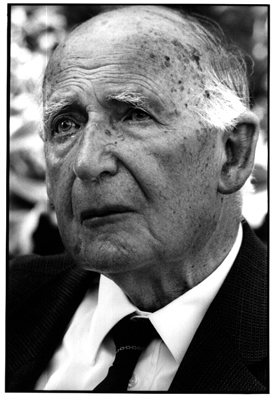
It is with great regret that we note the recent passing of astronomer and physicist Sir Bernard Lovell OBE FRS, whose many scientific and technical accomplishments included leadership of the team that developed and built the 76m radio telescope at Jodrell Bank Observatory, at one time the largest fully steerable radio telescope in the world. Lovell's legacy is substantial, extending from his work during World War II to his pioneering contributions to radio astronomy and his dedication to education and public engagement with scientific research.
Career Opportunities
New Postings
Jansky Fellow: The National Radio Astronomy Observatory is accepting applications for Jansky Fellows. The purpose of the Jansky Fellowship program is to provide an opportunity for young scientists to establish themselves as independent researchers so that they may more effectively compete for permanent positions. The placement of Fellows at institutions other than the NRAO will help foster closer scientific ties between the NRAO and the U.S. astronomical community. Fellows formulate and carry out investigations either independently or in collaboration with others within the wide framework of interests of the Observatory.
NAASC Postdoctoral Fellow: The North American ALMA Science Center (NAASC) located in Charlottesville, Virginia, is offering a Postdoctoral Fellowship. In addition to individual research time, the NAASC Postdoc will develop ALMA expertise and assist the NAASC scientific staff in the support of ALMA users.
ALMA Control System Java Developer: The NRAO ALMA Computing Division is seeking a Software Engineer II to extend, maintain, and debug the high-level layer of the ALMA Control subsystem, including the data capture component. This software is implemented in Java.
ALMA Postdoctoral Fellow: The Joint ALMA observatory (JAO) in Santiago, Chile is accepting applications for ALMA Postdoctoral Fellows to support ALMA science operations. Successful candidates will work in the JAO Department of Science Operations (DSO), which is responsible for observations, data processing and the proposal review process. They will perform their duties as part of the large team of international scientists working at JAO and in the ARCs.
Director – ALMA: The Joint ALMA observatory (JAO) in Santiago, Chile is seeking a Director to provide leadership and scientific abilities in the multinational environment of ALMA. The incumbent will have overall responsibility of leading the observatory and for reporting to the ALMA Board on all aspects of the facility. Specifically the Director is responsible for completing within budget the construction phase of ALMA, ensuring the successful transition to full operations, and subsequently operating the observatory to realize its full scientific potential.
Software Engineer II: The NRAO in Socorro, NM is recruiting for a Software Engineer II. Initially he/she will work with other Scientific Support System group members and Open Sky staff to re-insource the Proposal Submission Tool (PST), User Database (UDB), and portal development and maintenance to the NRAO. The Software Engineer will work with our database administrator (DBA) on database issues as well as with our web master on issues like hosting and deploying the PST and portal.
From the Archives
Ellen Bouton

About this month's photo: The Very Long Baseline Array (VLBA) was dedicated in August 1993. In this photo, taken in late 1986 during the construction of the first antenna, in Pie Town NM, employees of the VLBA antenna contractor, Radiation Systems Inc, are setting the azimuth track for the Pie Town antenna in preparation for grouting the track. Thanks to Craig Walker and Peter Napier for caption information.
From the Archives is an ongoing series illustrating NRAO and U.S. radio astronomy history via images selected from our collections of individuals' and institutional papers. If readers have images they believe would be of interest to the Archives, please contact Ellen Bouton, ebouton@nrao.edu.

